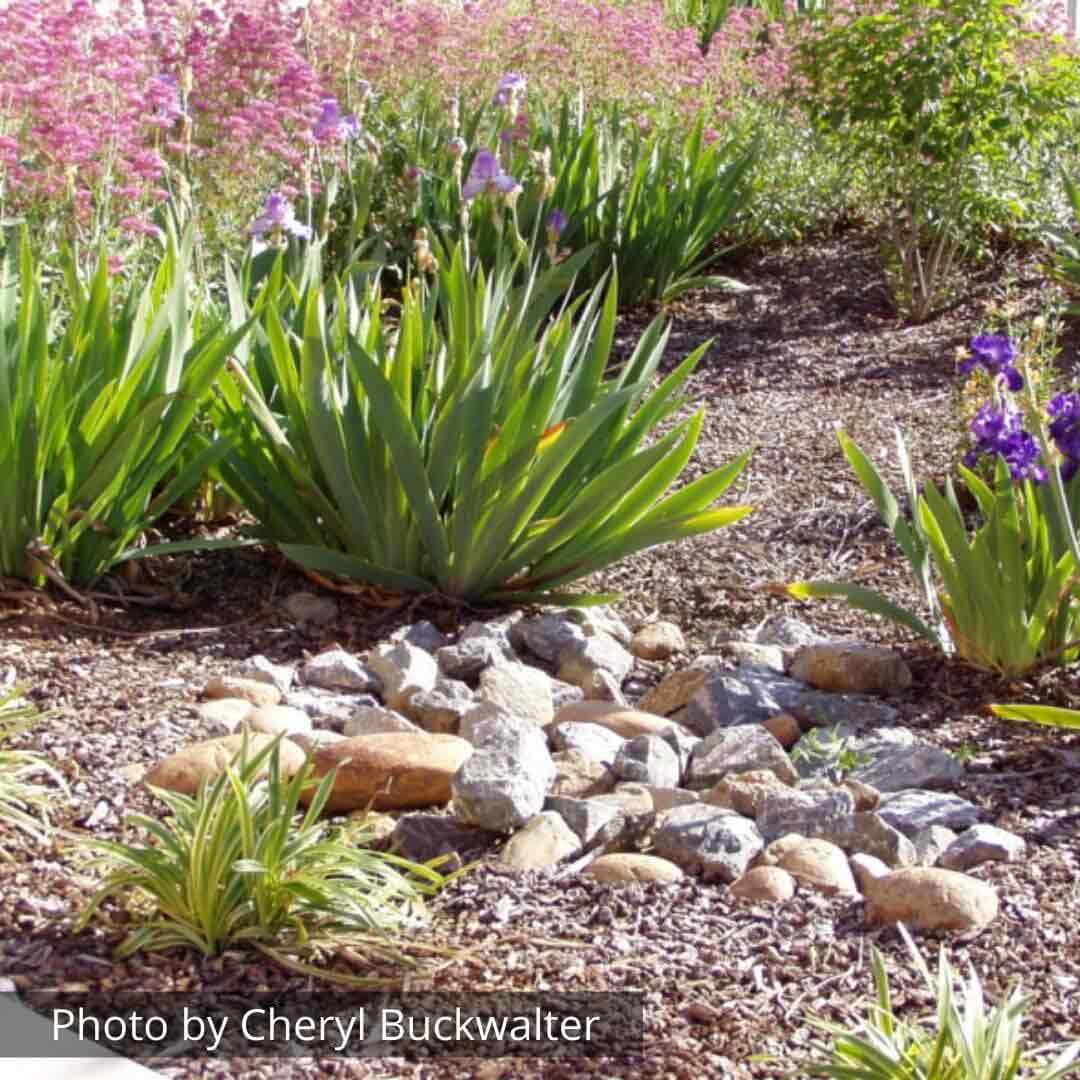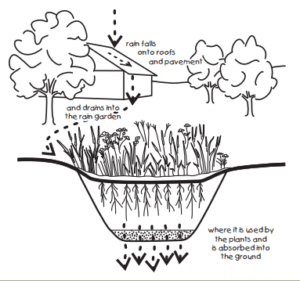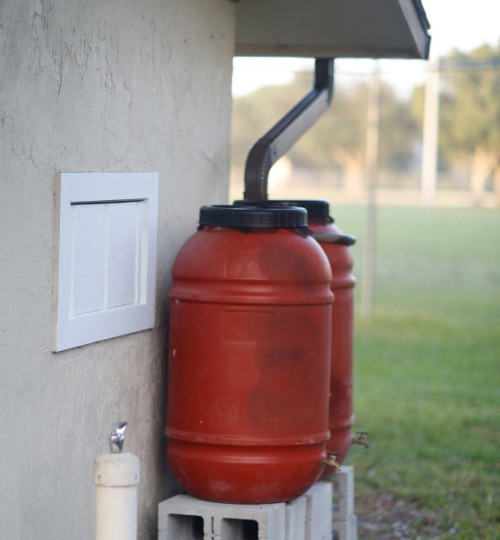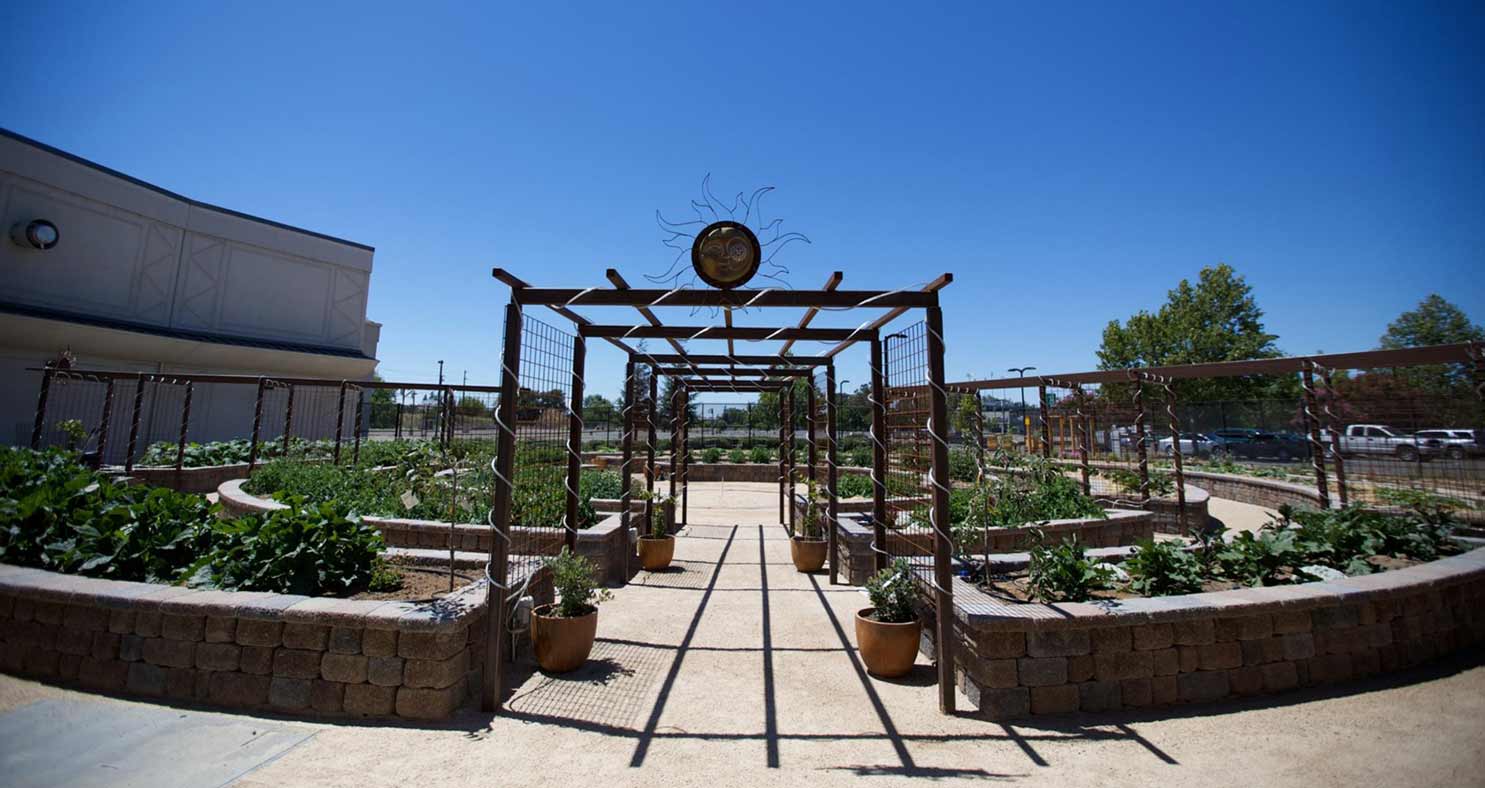
Eco-Friendly Landscaping
Eco-Friendly Landscaping practices are designed to help you create a healthy, beautiful, vibrant yard while conserving water, reducing yard waste, preventing pollution of our air and local rivers, and providing habitat for birds and beneficial insects .
Do you need help creating an Eco-Friendly Landscape? Click here to see a list of qualified professional landscapers who have been trained on sustainable landscaping practices.
Benefits to you:
- Saves money on water, fertilizers, and pesticides
- Reduces exposure to toxic chemicals for your family and pets
- Maximizes beneficial use of green “waste” in your landscape
- Requires less maintenance such as mowing and trimming
- Attracts wonderful birds and butterflies to your garden
Benefits to the community & environment:
- Conserves landfill space
- Reduces carbon emissions
- Improves water quality by reducing pollution
- Reduces air pollution by reducing the amount of green waste that needs to be transported
To get started, consider these steps:
Use mulch in flower, vegetable, and shrub beds
- Mulch is a covering of organic material, which can prevent water loss, keep weeds down, and decompose to make the soil healthy.
- Use mulch materials such as shredded bark, ground up tree trimmings, and fallen leaves.
- Apply mulch three inches or more deep. Keep mulch away from the base of trees and shrubs to reduce damage from disease and pests.
Grasscycle when mowing lawns to help create a healthy turf and soil
- Grasscycling allows grass clippings and their nutrients to be recycled into the lawn and soil, reducing the need for fertilizers. In addition, there is less waste sent to the landfill.
- Replace the standard blade on your lawn mower with a mulching blade that cuts clippings into smaller pieces that break down more readily.
- Remove the bag (so the clippings stay on the lawn) and mow as usual.
- Mulch and Grasscycling Guide – Learn the importance of mulch and grasscycling and step by step guidance on how to apply these practices in your landscape.
Consider Rain Gardens: Soak up the Rain Water
Rain gardens are shallow, landscaped depressions that capture rain water that runs off roofs and/or pavement. Rain gardens have many benefits:
- Collects rain water and allows it to slowly soak into the ground. An average sized rain garden in Sacramento can potentially retain thousands of gallons of water every year!
- Reduces runoff from your property
- Filters out pollutants in runoff
- Contains beautiful and colorful plants and shrubs
- Provides habitat for birds and butterflies
Check Your Irrigation System
- Look for broken or out of adjustment heads.
- Set your controller properly for the season.
- Contact your water provider for water-wise house calls to assess your water use and find ways to conserve water in your landscape.
Use compost to improve soil health and fertility
- Reduces fertilizer needs
- Improves water use efficiency
- Incorporate when planting or apply to shrubs and lawns
Use less or non-toxic pest control
- Beneficial insects can keep pests under control by feeding on them. Include plants that will attract them to your yard.
- Choose plants that are pest-resistant and native to your area.
- Look for eco-friendly options at your local garden or hardware supply store.
Learn more about benefits of eco-friendly landscaping with The 7 Principles of River-Friendly Landscaping Brochure .
Rain Gardens Example

For rain garden design ideas and plant suggestions, check out The New California Landscape Project.
For more information on rain gardens, go to: https://www.epa.gov/soakuptherain/soak-rain-rain-gardens.

Rain Barrels for your Garden
Rain barrels are a great addition to your landscape! They capture water from a roof and hold it for later use such as on lawns, gardens or indoor plants. Another benefit is that they help keep water onsite, which reduces the amount of water that runs off your property.
Some water providers provide rebates for customers who install rain barrels. Check here to see if your water provider offers rebates: https://bewatersmart.info/wp-content/uploads/2017/09/RWA-Incentive-Overview.pdf
For more information on rain barrels, go to: https://www.epa.gov/soakuptherain/soak-rain-rain-barrels
Landscaping Resources and Tools:
- Rescape CA– Learn tips on how to create a water-efficient garden, reduce pesticides, build healthy soil, select plants, and many more!
- Be Water Smart – Developed by the Regional Water Authority, this website has extensive information on water conservation tips, plant lists, drought news, turf rebates, and landscape design resources.
- Our Water Our World – Our Water Our World is an award-winning partnership between city- and county-based water pollution prevention agencies, garden centers and hardware stores that sell pest control products. This program provides fact sheets for do-it-yourselfers and training opportunities for store employees to help customers find less toxic options for pest control.
- Fair Oaks Horticultural Center – Features water-efficient garden demonstrations that are open to the public and hold periodic workshops.
- Find a Rescape Qualified Landscaper – This directory provides a list of landscapers who have been trained on sustainable, holistic approaches to the design and management of landscapes that include conserving water and soil, reducing waste, and preventing pollution.
- Cash for Grass Rebates – Find out if your water provider is offering rebates to remove grass and replace it with drought-tolerant plants.
- Sacramento County Waste Management and Recycling Compost Guide – Learn the benefits and different techniques of composting.
- SMUD’s Free Wood Chips and Shade Tree Program – Learn how to get free wood chips and shade trees from SMUD!
- Sacramento Tree Foundation – Get tips on how to properly plant trees and care for them.
- Eco-Friendly Gardening Videos – Watch these eco-friendly gardening video provided by Our Water Our World.
- Eco-Friendly Events – There are plenty of events you can participate in, happening online and in-person! Visit our events calendar for more information.
- American River Parkway Foundation Native Plant Garden – Learn how to create a native plant garden to support local wildlife and reduce water usage.
- Creating a Water-Wise Garden – Find tips and resources for creating a water-efficient garden from the Sacramento Suburban Water District.
- Shady 80 – Sacramento Tree Foundation – Discover the best trees to plant in Sacramento for shade, beauty, and sustainability from the Sacramento Tree Foundation.
Landscaping Rebates:
Several water agencies provide rebates to customers who would like to replace grass with drought-tolerant landscaping. To find out what rebates are available through your water provider, go to https://bewatersmart.info/rebates-services/.
Local Examples of Eco-Friendly Gardens
Interested in seeing examples of what an eco-friendly garden, yard or landscape can look like? Below are some examples of places in our area you can go to for more information. Click the links below to learn more about them. More to come!
- Capital Public Radio Garden
- Elk Grove Rain Garden Plaza
- City’s Utilities Sustainable Gardens
- River-Friendly Garden at Waterman
Grasscycling Guide
- Mulch and Grasscycling Guide – Learn the importance of mulch and grasscycling and step by step guidance on how to apply these practices in your landscape.
- Cal Recycle’s Grasscycling Guide – Learn why grasscycling can produce a healthy, green lawn and how to get started.
UC Programs:
- U.C. Davis Master Gardener Program – Excellent resource for eco-friendly gardening and a one-on-one connection with a landscape advice expert.
- UC Integrated Pest Management Program– Provides information on garden/landscape pests and weed control.
- U.C. Davis Arboretum All-Stars – 100 tough, reliable plants that are easy to grow, don’t need a lot of water, have few problems with pests or diseases, and have outstanding qualities in the garden.

Pest Management
Pesticides contain chemicals that are harmful to our waterways and can also affect the health of your garden. If you have an issue with pests around your home or garden, there are simple less or non-toxic actions you can take to prevent pests and protect your property against these invaders. Learn more about pest management.

Capital Public Radio Garden
The CapRadio Garden, located at Sac State, demonstrates sustainable gardening practices that use water and land wisely and showcases many of the River Friendly Landscaping principles. Additionally, the garden assists in teaching about nutrition, conservation, and wildlife. The garden serves as an educational tool hosting both hands on activities and lectures to discuss and teach about the issues surrounding food. Garden maintenance is taken of care off in part by local high school students and the produce from the garden is donated to local food banks.


